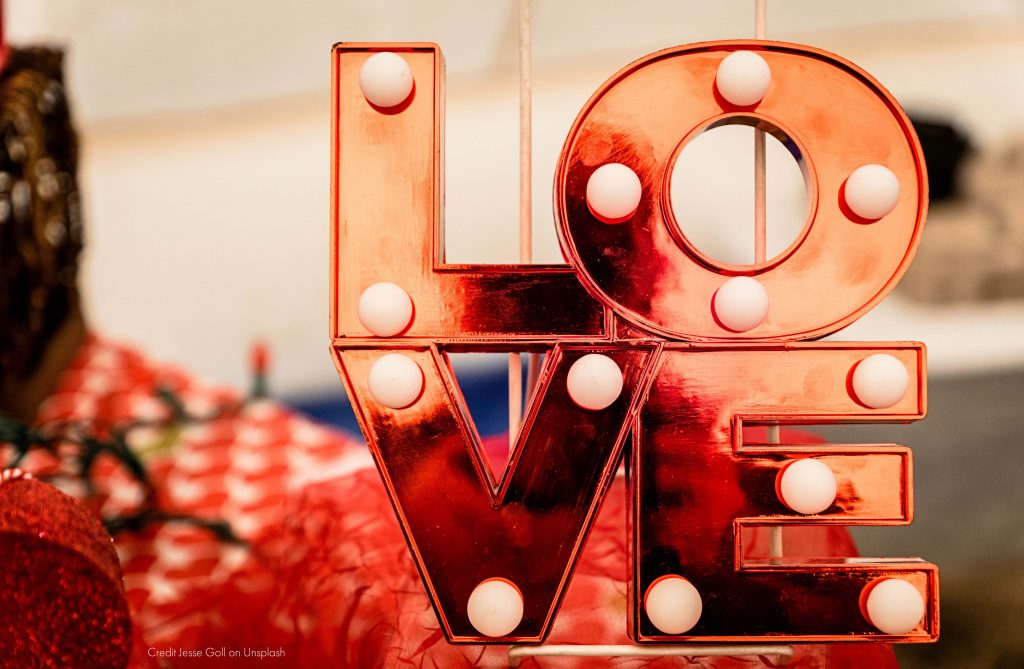As February approaches, couples all over the world anticipate the arrival of Valentine's Day, a day devoted to the celebration of romantic love. Yet how many of us truly understand the origins of this special day? What might seem a modern tradition of exchanging heart-shaped chocolates, blooming roses and sweet nothings holds roots that stretch back to the 5th century. We thought you’d like to come on a trip through time and unearth the fascinating history of Valentine's Day.
Pagan Festivities: The Ancient Origins of Valentine's Day
Before Valentine's Day was recognised in its current form, the Romans commemorated a mid-February fiesta known as Lupercalia. This ancient rite, steeped in fertility and fruitfulness, was a tribute to Faunus, the Roman deity of agriculture, as well as the legendary founders of Rome, Romulus and Remus. The intriguing practices carried out during Lupercalia were steeped in mystery and sensuality. The festival featured various rituals, such as ceremonial sacrifices and an unusual lottery that randomly coupled men and women for the festival's duration. This pairing was believed to promote fertility and well-being for the people of Rome. Also during this time, it is believed that Emperor Claudius II executed two men — both named Valentine — on the 14 of February of different years in the third century. Their martyrdom was honored by the Catholic Church with the celebration of St. Valentine's Day.
The Christian Reinterpretation: Introducing Saint Valentine
As Christianity started to permeate through various cultures, numerous pagan festivities were either phased out or adapted to reflect Christian beliefs. Lupercalia was one such festival that underwent this transformation. The 5th-century Pope Gelasius made a decree to dedicate the 14th of February to the commemoration of Saint Valentine. However, it's interesting to note that this decision wasn't based on the saint's romantic exploits but rather his unyielding devotion to his faith, his courage, and ultimate sacrifice.
The moniker 'Valentine' was carried by several early Christian martyrs, and the precise identity of the Saint Valentine honoured on this day remains a subject of debate among historians. Yet all narratives associated with these figures are inspiring tales of resolute faith and fortitude in face of adversities, without any direct correlation to romantic love or courtship. So, while we associate the name with love and affection today, the original Saint Valentine would likely be surprised by the romantic connotations his feast day has acquired over the centuries.
The Birth of Valentine's Day: The Intersection of Romantic Love and Christianity
 The bond between Valentine's Day and notions of romantic love can be traced back to the Middle Ages, a period of sweeping social change and intense emotional expression. This tie was woven by the illustrious poet Geoffrey Chaucer, known as the father of English literature. In his narrative poem, "Parliament of Fowls", Chaucer depicted birds engaging in the act of choosing their partners on St. Valentine's Day. This striking imagery led to the association on 14th February with lovebirds declaring their affection for one another. Chaucer's writings lit the spark, marking the dawn of a new tradition of expressing love and adoration on this particular date.
The bond between Valentine's Day and notions of romantic love can be traced back to the Middle Ages, a period of sweeping social change and intense emotional expression. This tie was woven by the illustrious poet Geoffrey Chaucer, known as the father of English literature. In his narrative poem, "Parliament of Fowls", Chaucer depicted birds engaging in the act of choosing their partners on St. Valentine's Day. This striking imagery led to the association on 14th February with lovebirds declaring their affection for one another. Chaucer's writings lit the spark, marking the dawn of a new tradition of expressing love and adoration on this particular date.
Interestingly, another belief that fuelled this connection stemmed from an annual natural occurrence observed in France and England. It was widely accepted that birds initiated their mating season on 14th February. This belief further strengthened the link between this day and themes of love, romance, and courtship. As a result, St. Valentine's Day gradually transitioned from a religious observance honouring a steadfast saint to a celebration of romantic love.
However, the transformation didn't happen overnight, and it wasn't until the 15th century that the tradition of exchanging love letters on Valentine's Day began to take shape. As the centuries rolled on, these heartfelt expressions of love evolved, culminating in the modern traditions we associate with Valentine's Day today. From Chaucer's verses to lovebird lore and the eventual exchange of missives, the birth of Valentine's Day as a celebration of love was a fascinating interplay of literature, nature, and societal change.
The Commercialisation of Valentine's Day: From Love Letters to Gift-Giving
The evolution of Valentine's Day into a commercial phenomenon started in the late 1700s. This period witnessed the shift from the heartfelt tradition of penning love letters to the convenience of mass-produced greeting cards which became popular in the Victorian period in the 19th century when their obsession with elaborate cards made Valentine’s Day into a heart-bedecked extravaganza. The reduction in postage rates made it feasible to send Valentine's cards through the post. This lowered cost made Valentine's Day accessible to a larger number of people, propelling it from a niche, romantic custom into a widely celebrated event. As Valentine's Day approaches, shops continue this tradition as their shelves fill with these printed expressions of love, each card capturing the sentiments of affection in beautifully crafted words.
The 20th century brought a new dimension to Valentine's Day gift-giving. The exchange of cards was now supplemented with chocolates, blossoming bouquets of flowers, and intricate jewellery. This trend was fuelled by clever marketing campaigns that promoted these items as tokens of love and affection. Indeed, these industries saw — and continue to see — a significant boom in sales during this period.
Today, Valentine's Day stands as a major event in the commercial calendar, with its economic impact reaching billions annually. From simple, hand-crafted notes of adoration, the celebrations of 14th February have evolved into a global industry, with a plethora of gifts available for those wishing to express their affection. This transformation has added a new layer to the celebration, redefining the way love is expressed and turning Valentine's Day into a phenomenon that extends far beyond its initial, humble origins.
The Modern-Day Valentine's Day: Global Celebrations and Local Traditions
Today Valentine's Day is typically characterised by the exchange of thoughtful and meaningful presents amongst couples.
From gifts that are truly personal, to gifts that capture the essence of love.
Spending time together and gifts, where experiences can be shared, is trending in 2025. The key message this year is that couples perceive that time is more valuable than money and that making memories is top of New Year goals.
Of course manner of celebration differs quite significantly across the globe, with unique regional customs adding a charming twist to this universal day of love.
South Korea incorporates an interesting twist with the establishment of an extra "Black Day" in April, especially reserved for individuals who didn't receive any presents on Valentine's Day. Brazil opts to diverge from the February date altogether, choosing to mark “Dia dos Namorados”, or "Lovers' Day," in June.
This event is distinguished by lively music festivals and captivating performances, adding a vibrant touch to their celebrations of love. Thus, Valentine's Day, whilst universally recognised, is celebrated in myriad ways around the world, each tradition imbued with its distinctive cultural flavour.
Valentine’s Day Facts
* Valentine's Day is florists' busiest day of the year with approximately 250 million roses are produced for Valentine's Day each year.
* There’s more than one ‘historical’ Valentine
* The total spend on Valentine's Day dropped to £926 million (£23 per person) in 2021, down from 2020's £1.45 billion (£35 per person).
* 85% of Valentine’s cards are bought by women.
* Cadbury invented the valentine’s day chocolates.
* The iconic little hearts sweets emblazoned with Valentine's Day messages were first created by a machine initially invented to make medical lozenges.
* X originated as a kiss from when people were illiterate, and they would sign a card with a mark ‘X’
* In 2021 in the USA $2.14 billion was spent on Valentine's gifts for pets.
 Australia
Australia  USA
USA 







